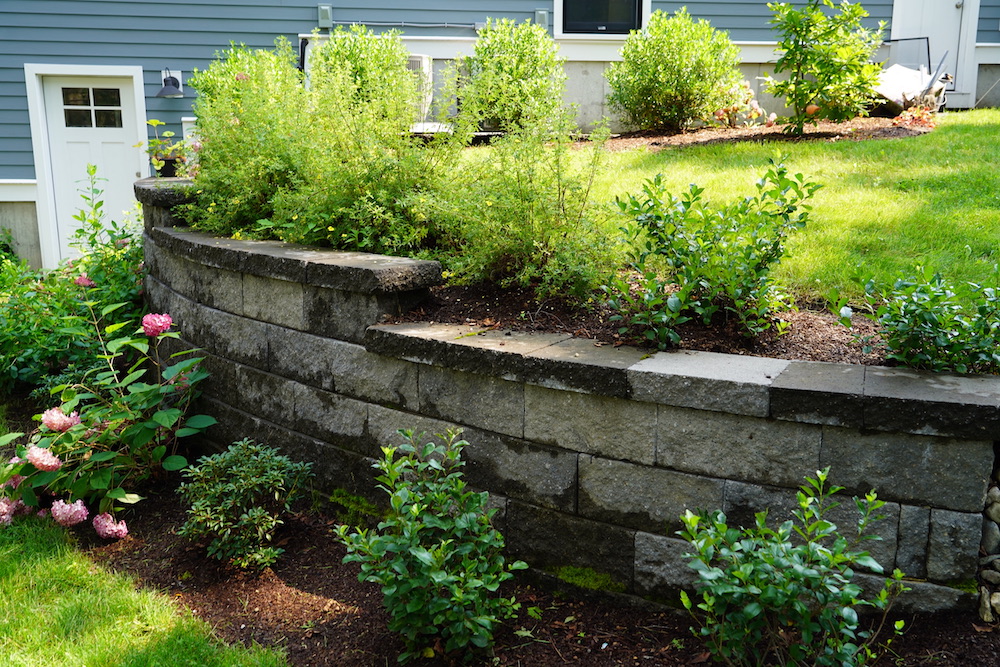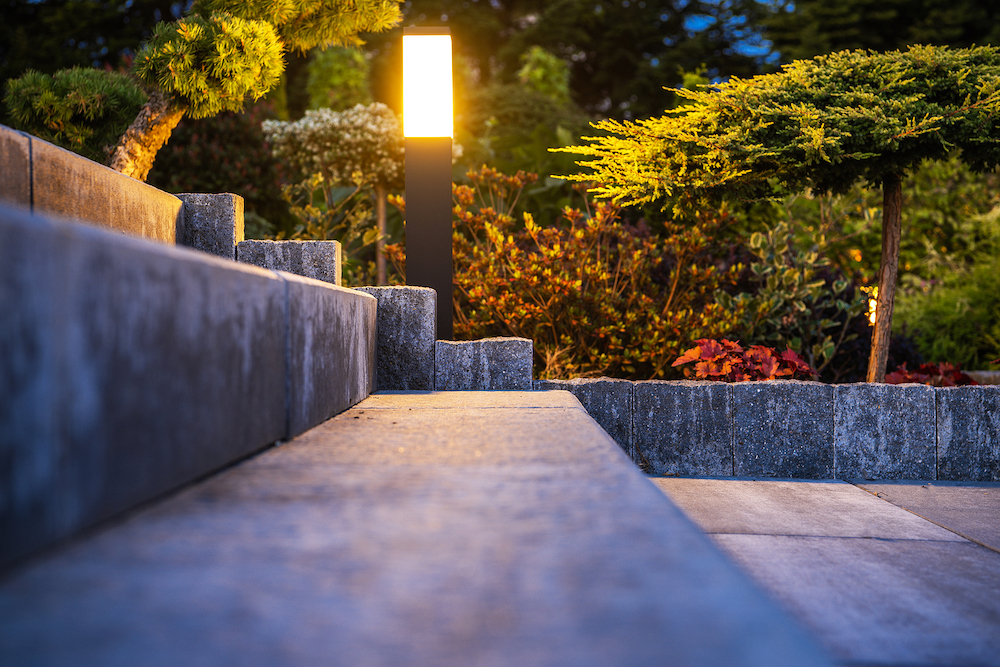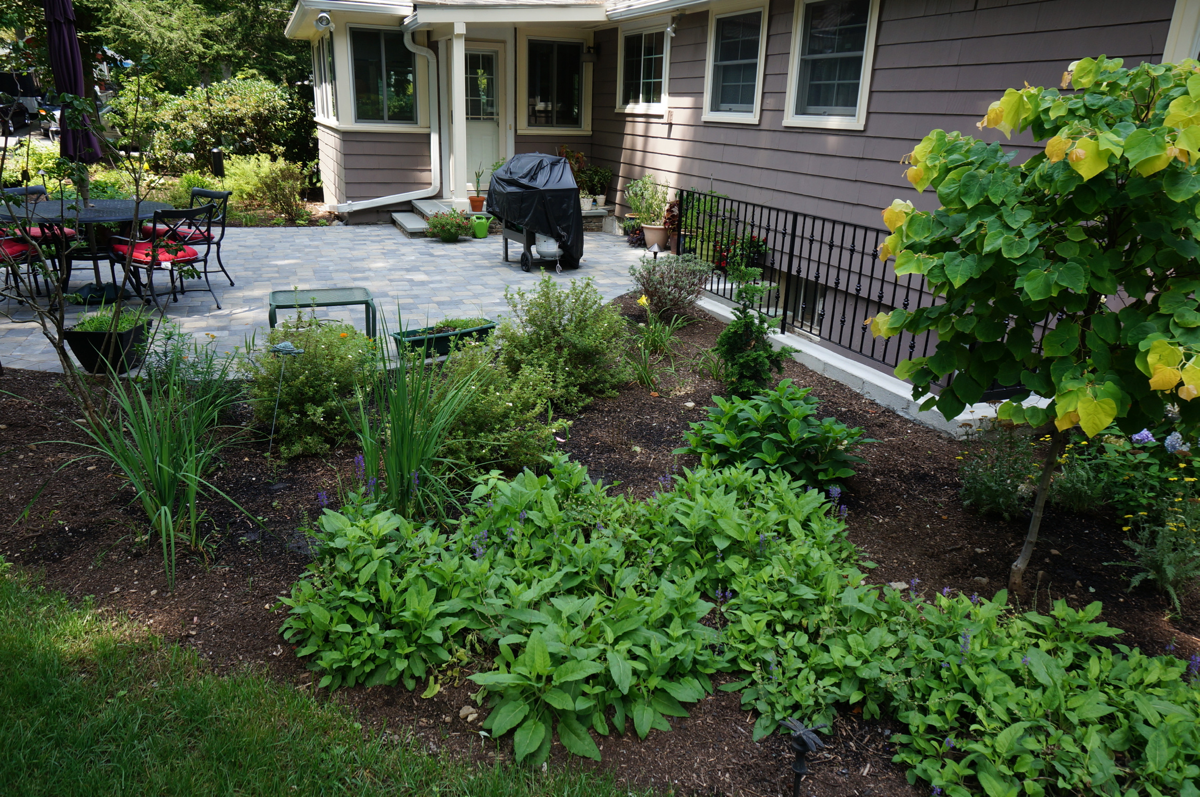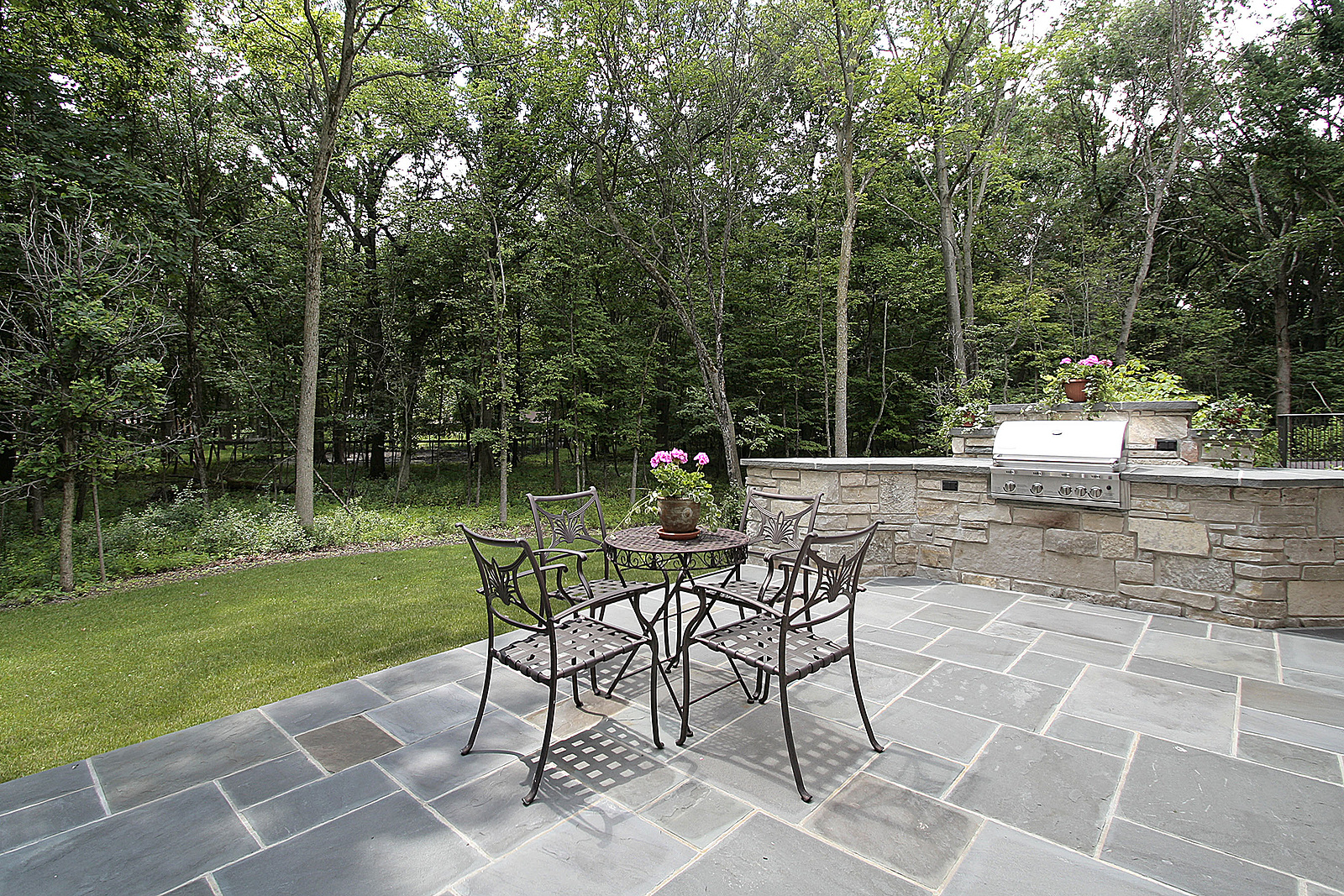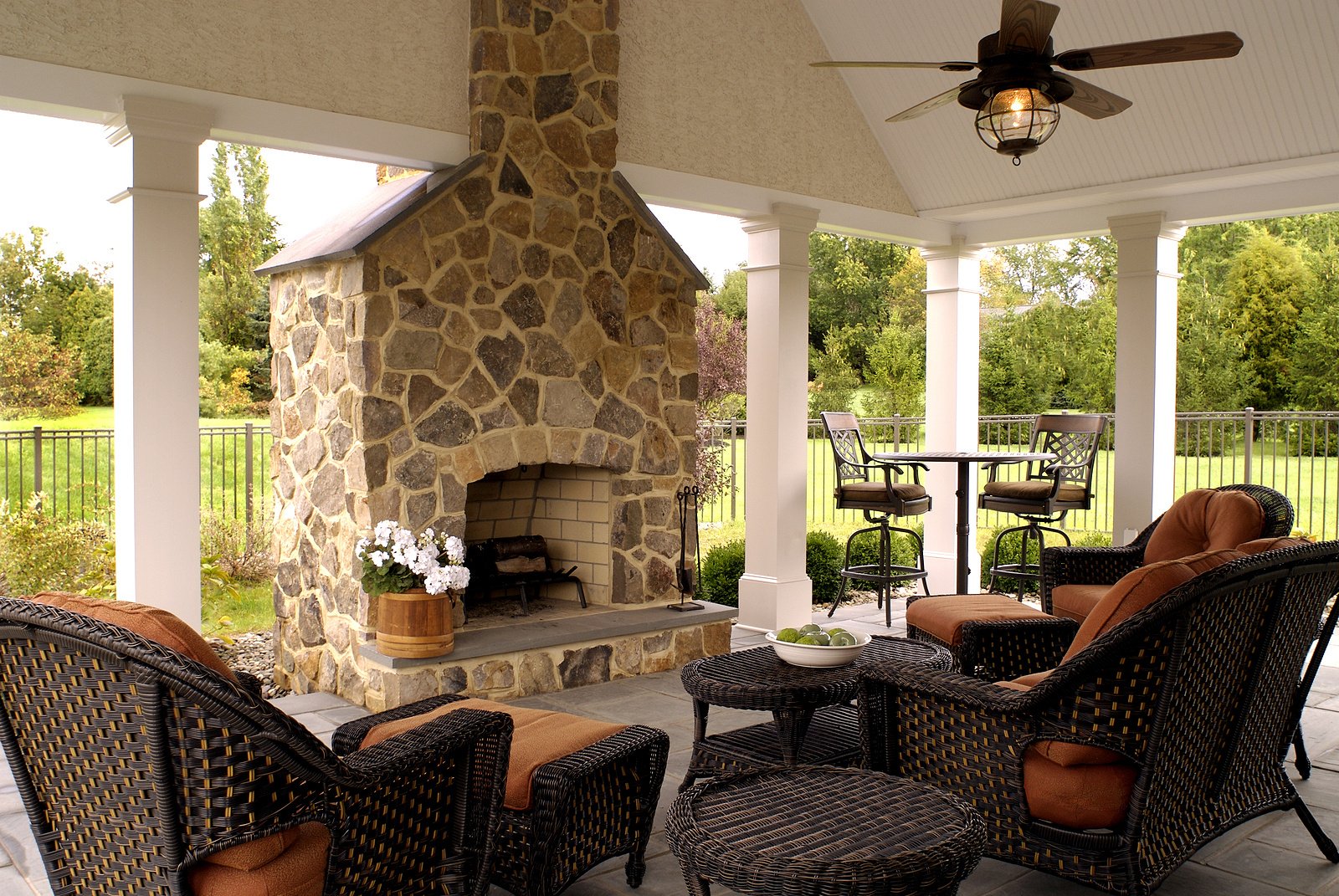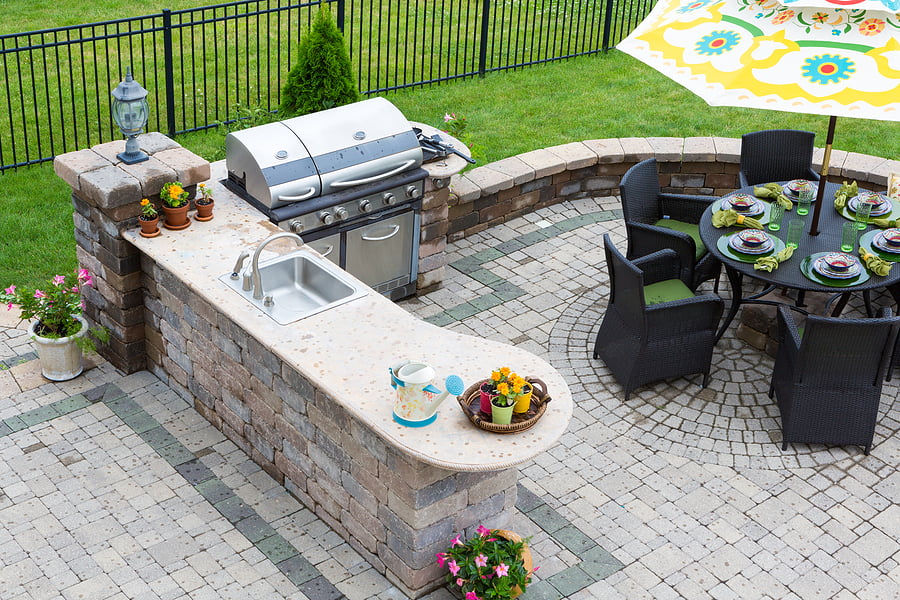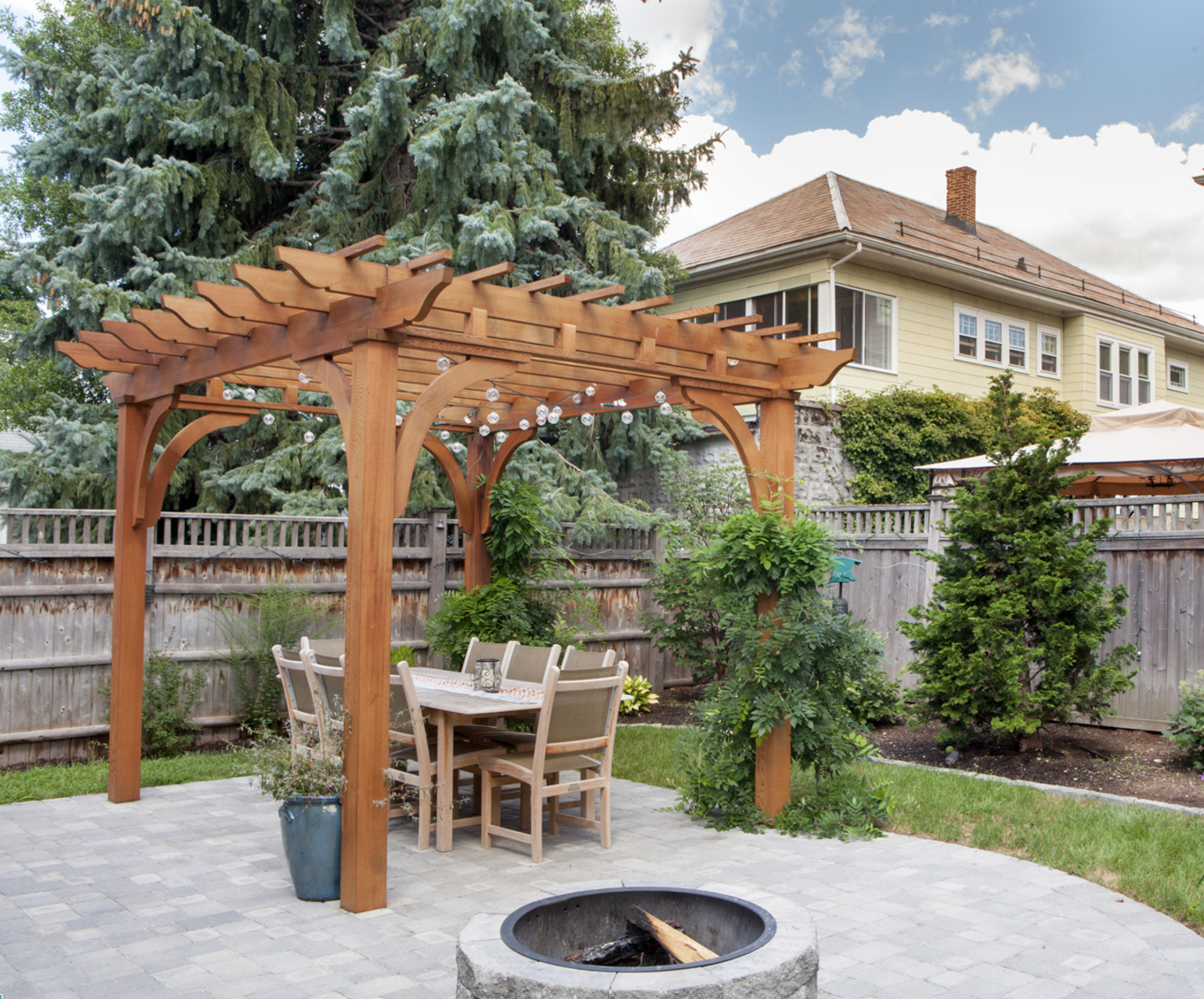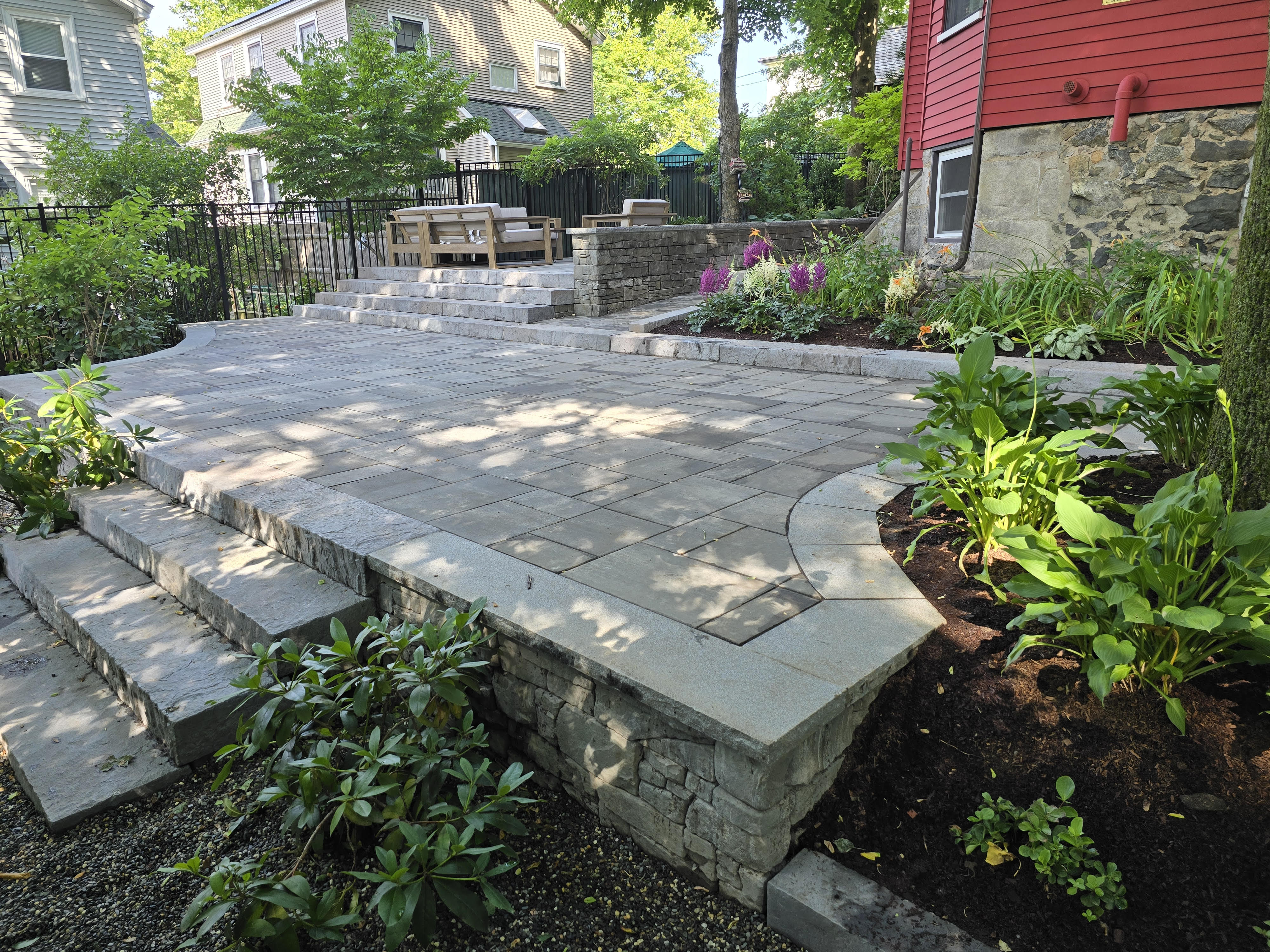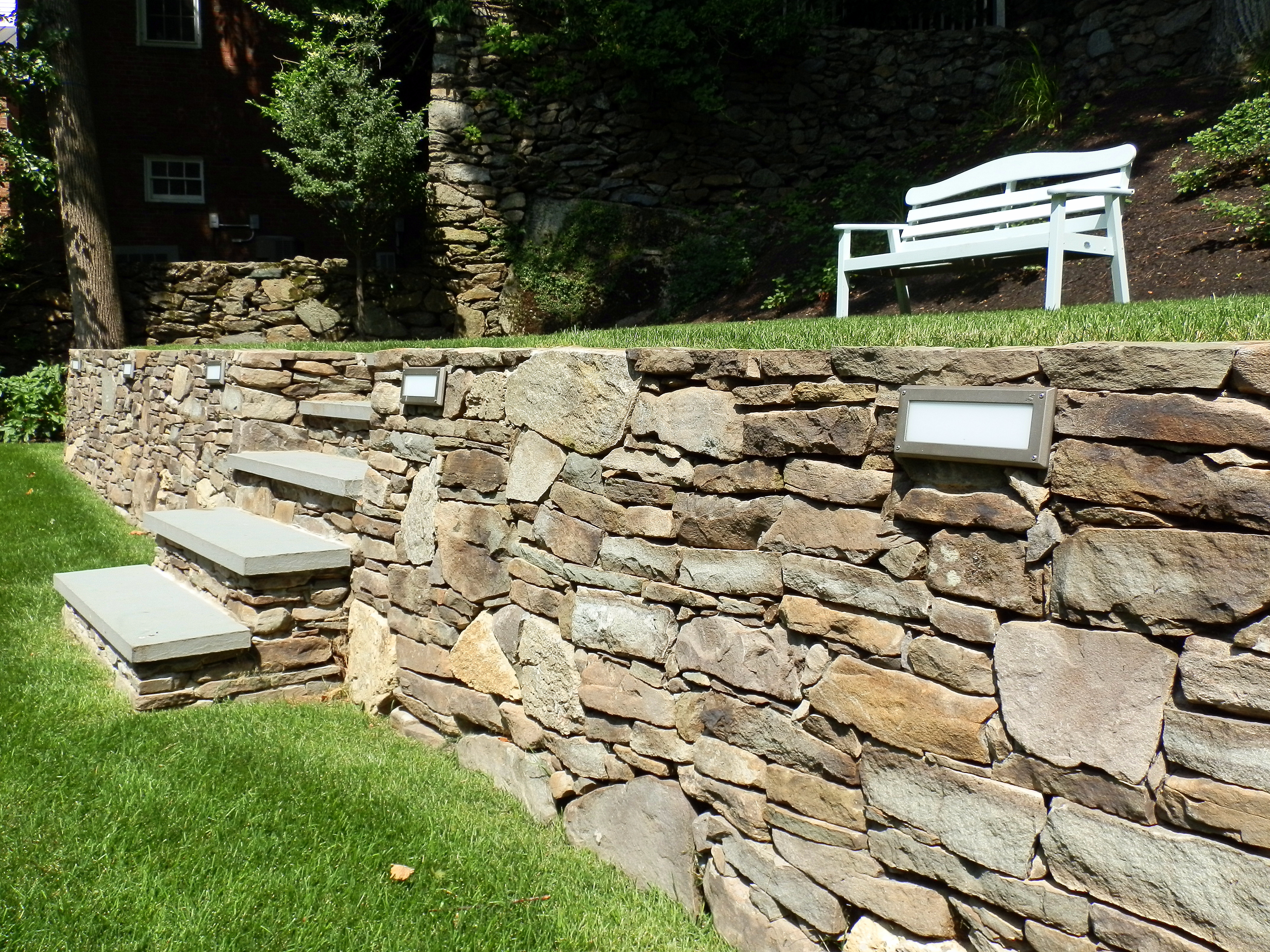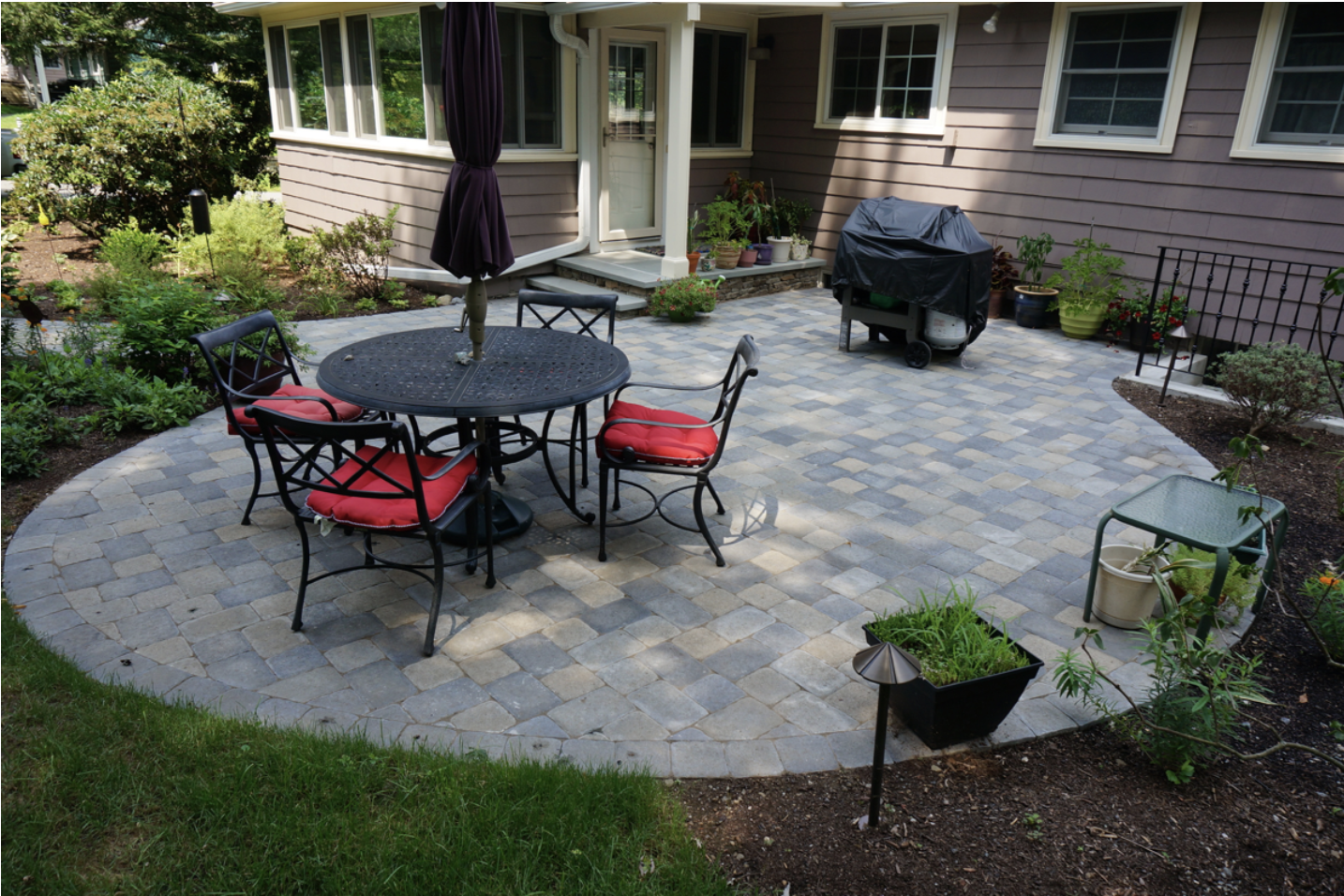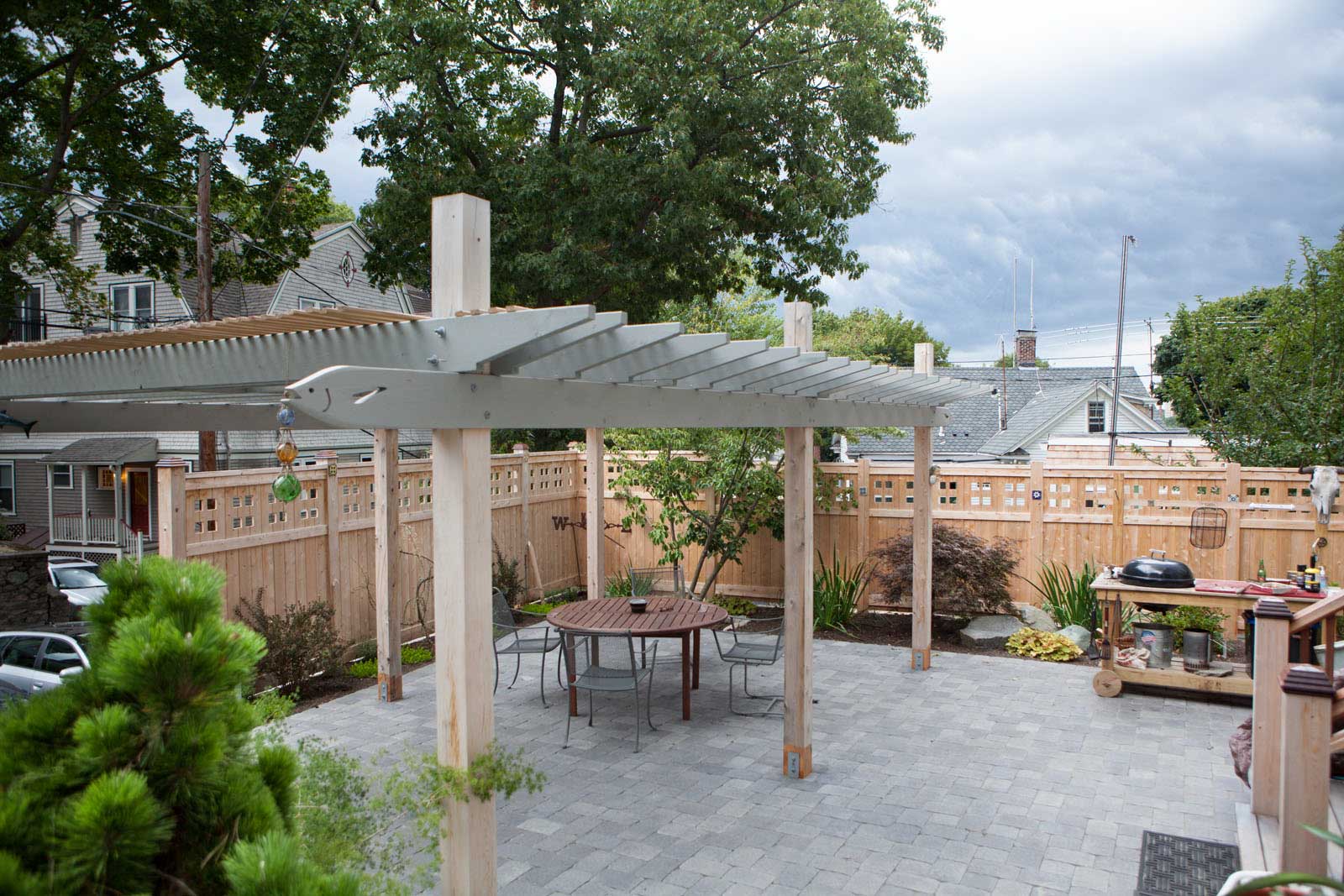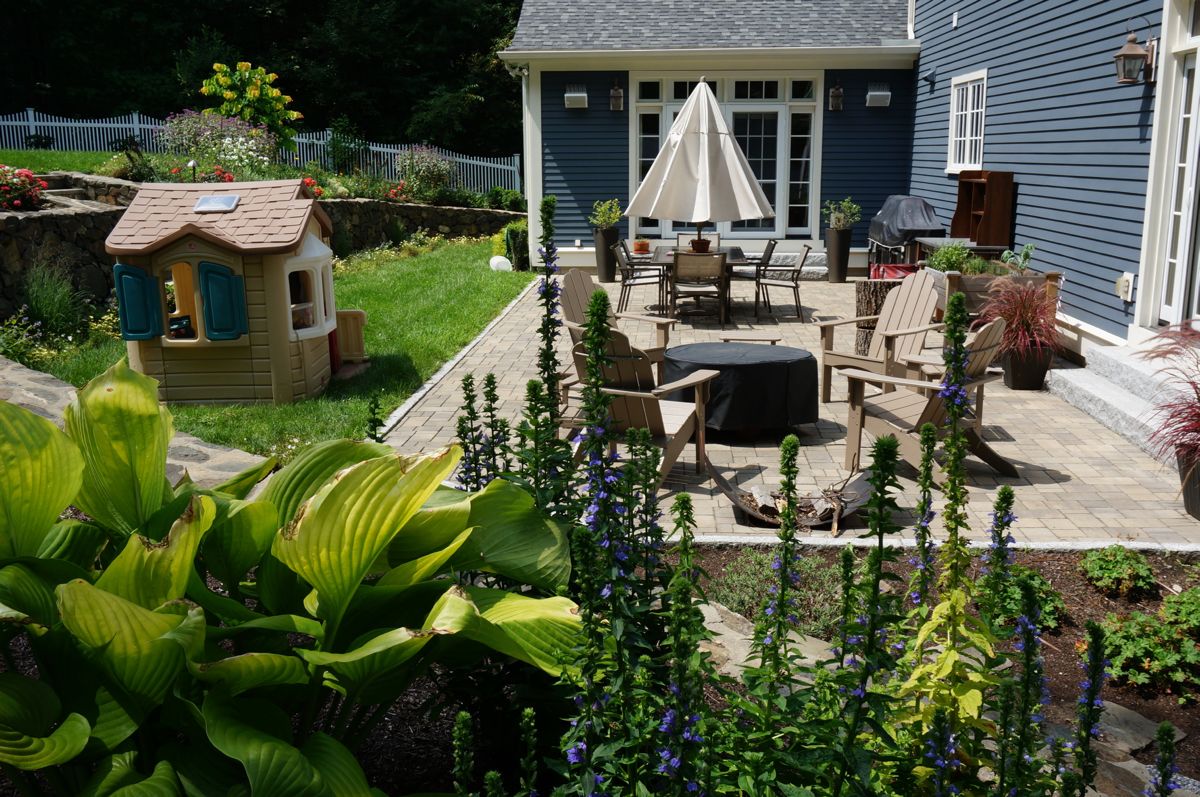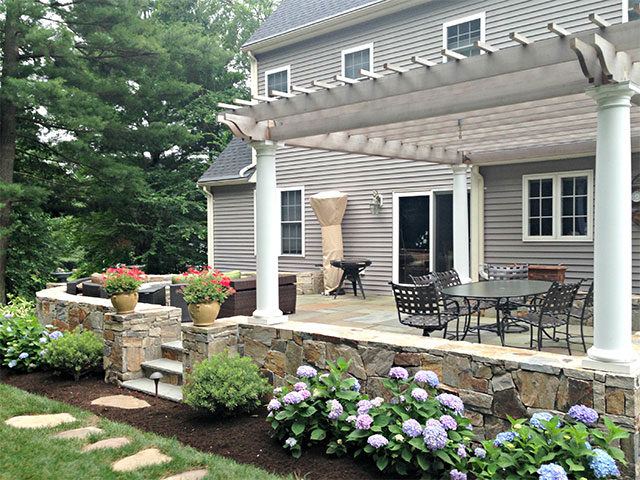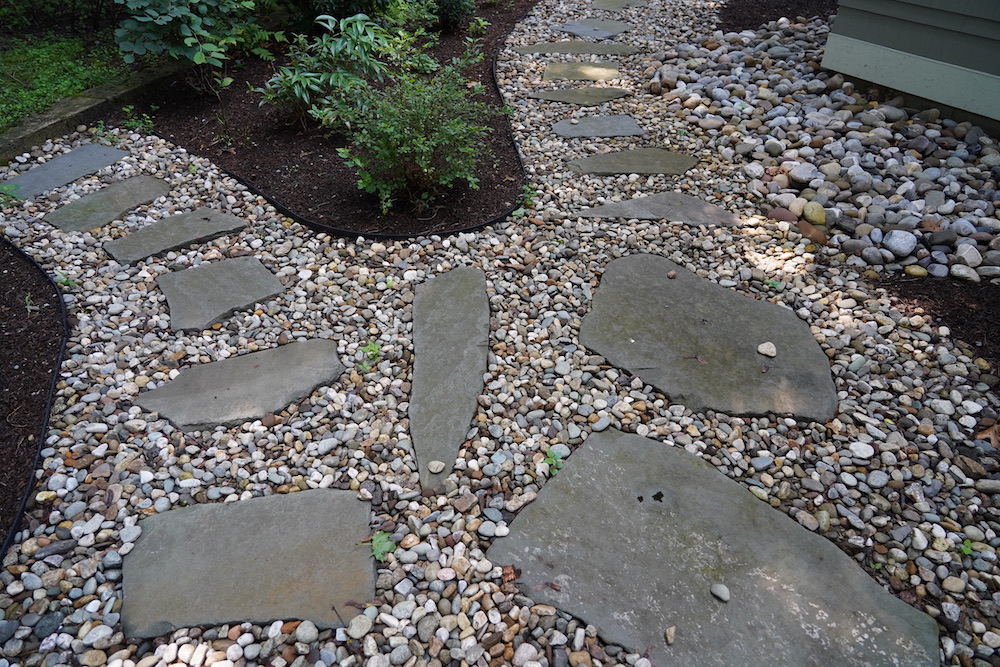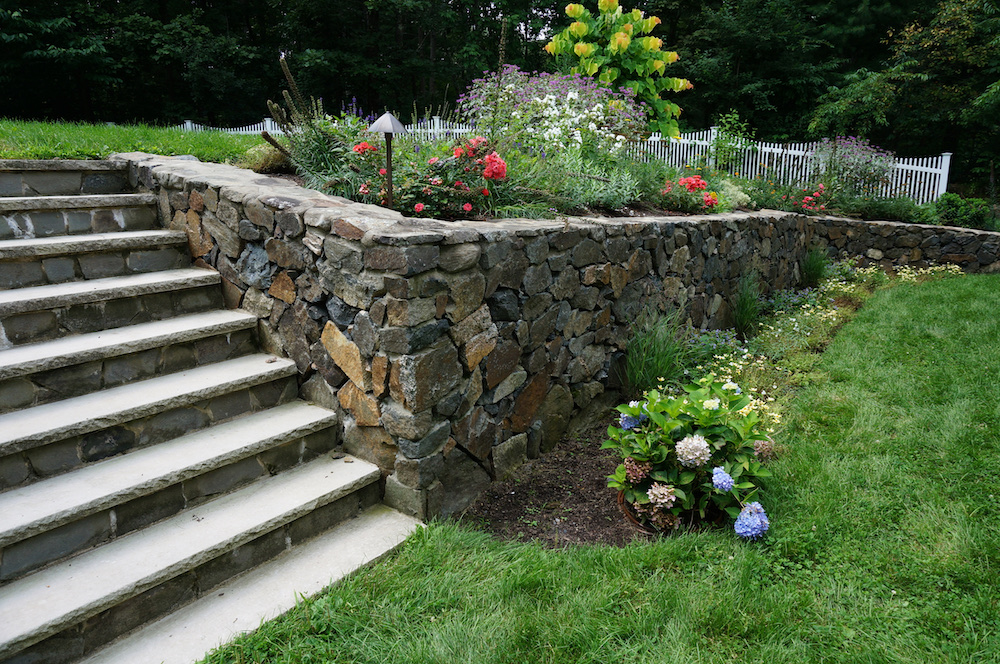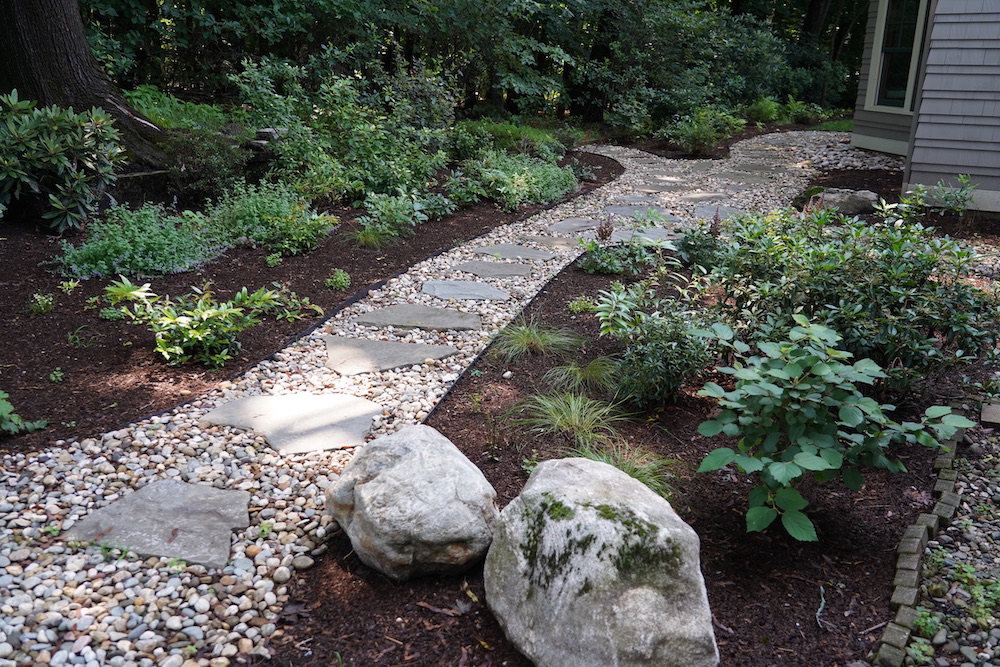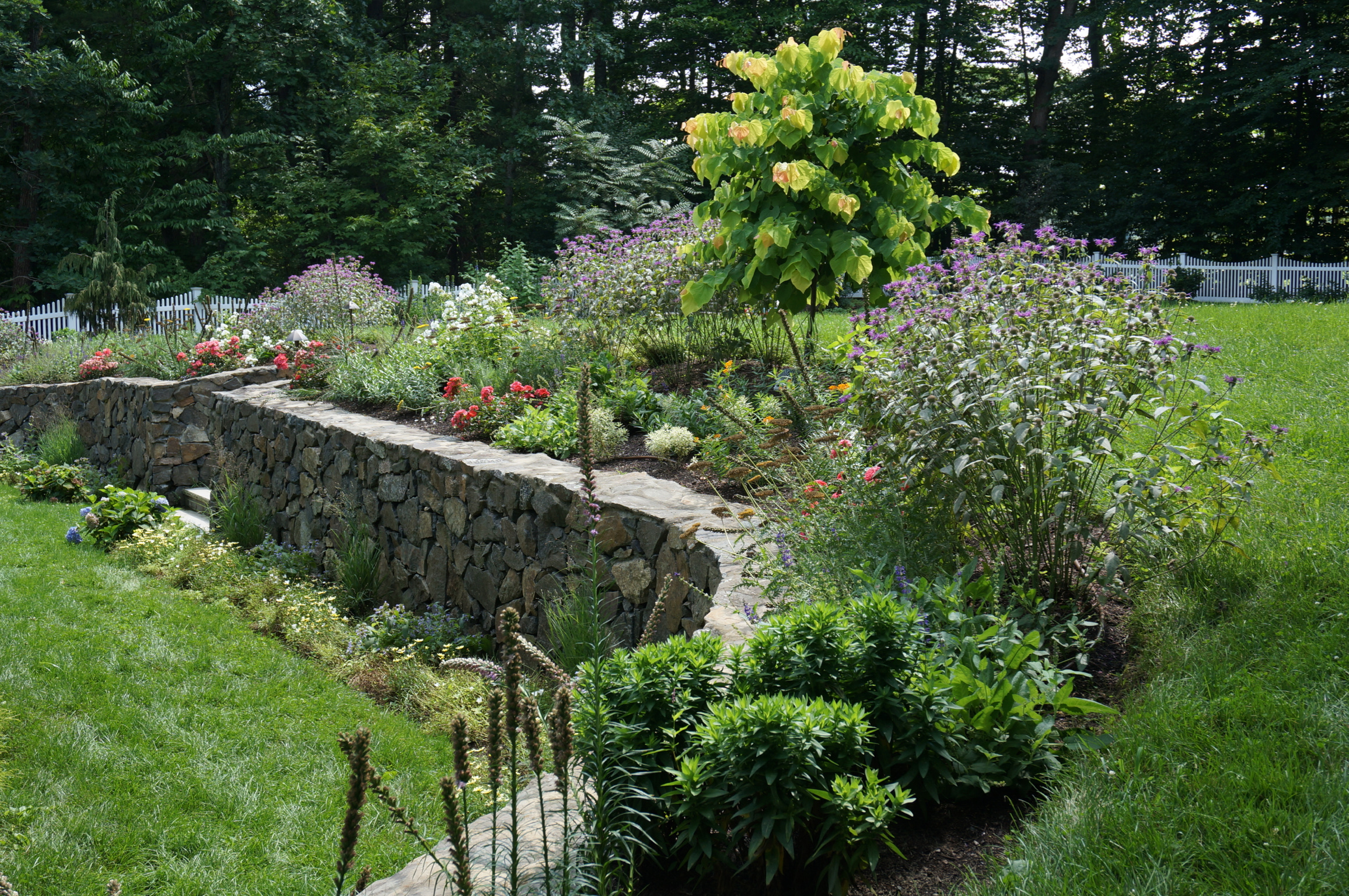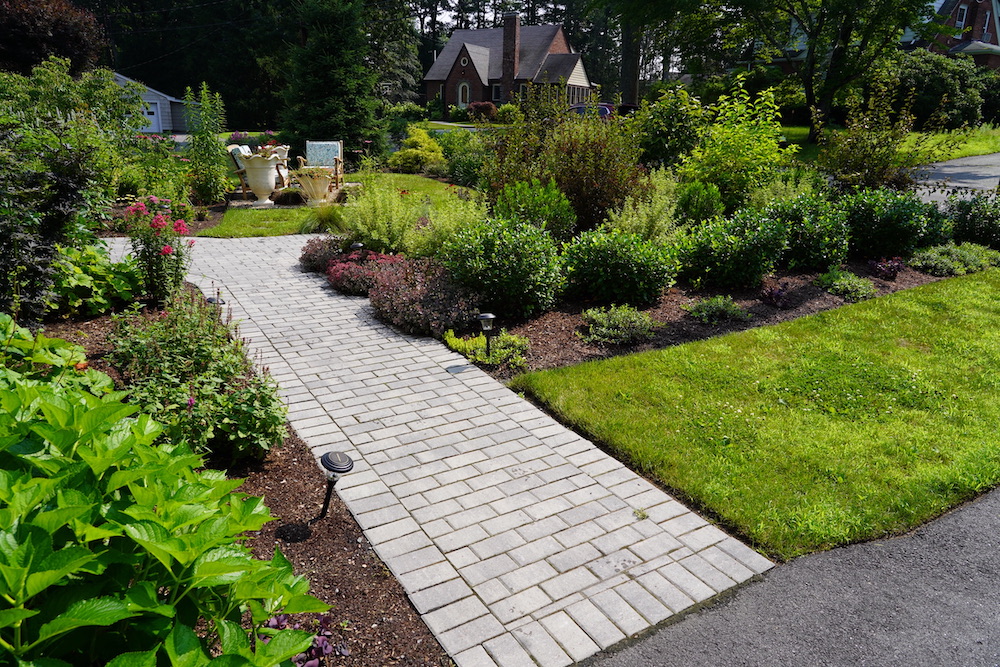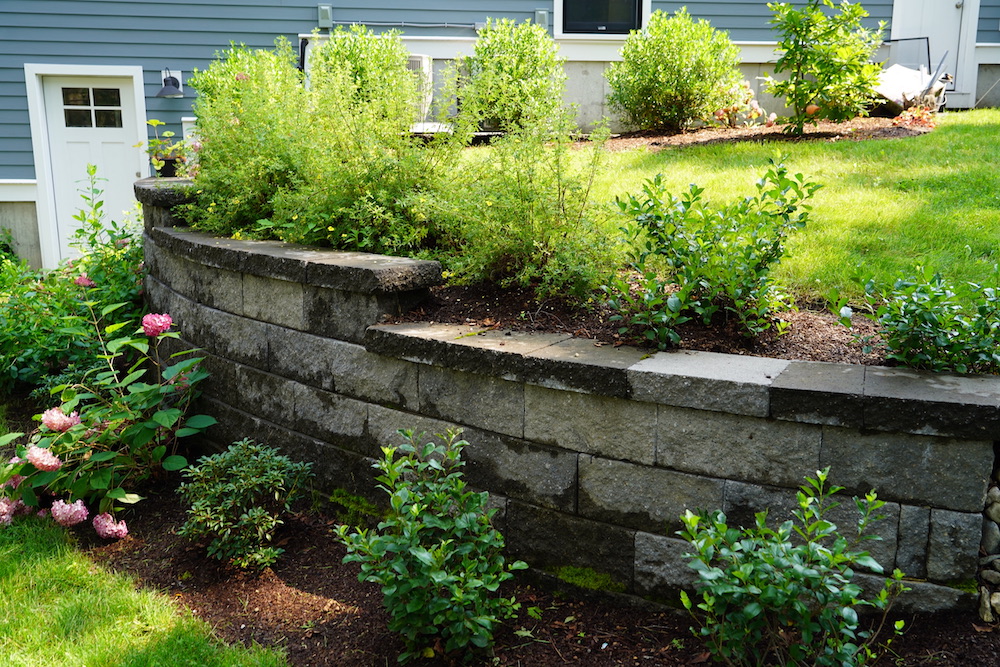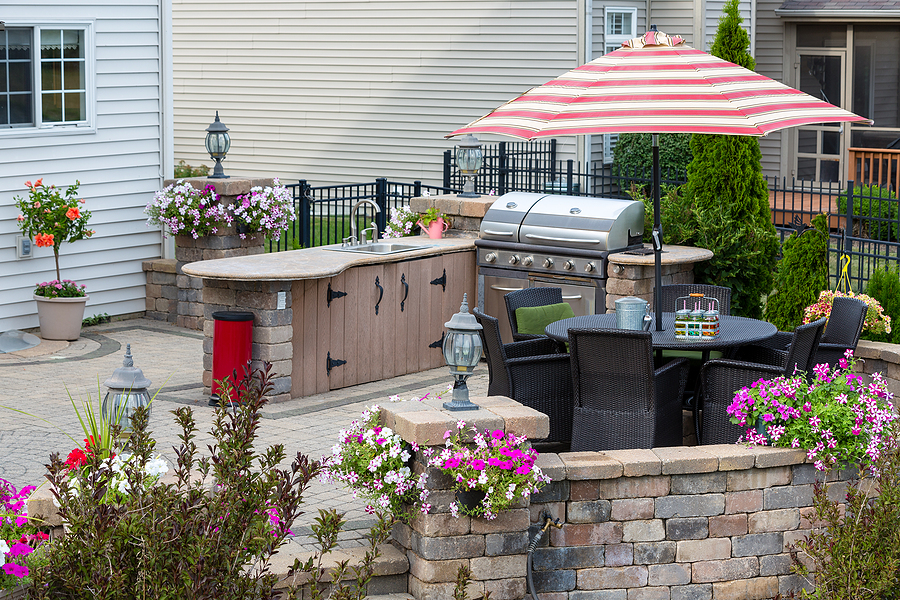Regardless of your overall home landscape, a well-constructed retaining wall is a design idea that can take your yard from nice but not noteworthy to one bursting with curb appeal.
There are many reasons for incorporating a retaining wall into your home landscape. Whether your plans for a retaining wall are meant to achieve aesthetic or functional goals, here is what you need to know when designing a retaining wall project, as well as some retaining wall ideas to help get you started.
Why should you add a retaining wall to your landscape?
Retaining walls can serve multiple purposes within a home landscape, and can be functional, aesthetic, or both. Some of those purposes include:
Soil Erosion
If you have a sloped lawn, a retaining wall may be necessary to hold soil in place. Erosion often occurs when melting snow and ice loosen the soil. Retaining walls can prevent safety issues arising from ground instability.
Sinkhole Prevention
By controlling the runoff of excess water, a retaining wall can prevent sinkholes from forming under the surface. Adding a retaining wall that can hold back or redirect water flow on your property is a solid protective measure that can help avoid damage to other elements of your landscape design, as well as your home’s foundation.
Stabilization
A retaining wall can stabilize a sloped area of your landscape, making it more functional. For example the support of a retaining wall may allow for an outdoor stairway to be built into a hillside.
Leveling and Terracing
Retaining walls are a great way to create flat surfaces on a sloped area. A previously unusable space can be turned into a flower or vegetable garden bed, or even a small patio.
Aesthetic Enhancement
By creating a tiered landscape, retaining walls add visual interest to your outdoor space. Segmented spaces can break up a large green or hardscaped area, or can provide a focal point for spaces like garden beds or water features.
Types of Retaining Walls
There are two primary types of walls that can be incorporated into your landscape design: freestanding and retaining.
Freestanding Retaining Walls
Freestanding walls are those that do not hold back any material. These are often used more for aesthetic purposes than to solve an existing issue within the current landscape. A freestanding wall can add texture and coordinating color to your landscape design, or a visual focus point to another area such as a patio.
Functional Retaining Walls
Functional retaining walls are those that hold back soil on one side. These walls are designed to solve an engineering problem such as those mentioned above. Although functional retaining walls aren’t always strictly built with aesthetics in mind, they too can add a nice visual counterweight to the green spaces in your landscape.
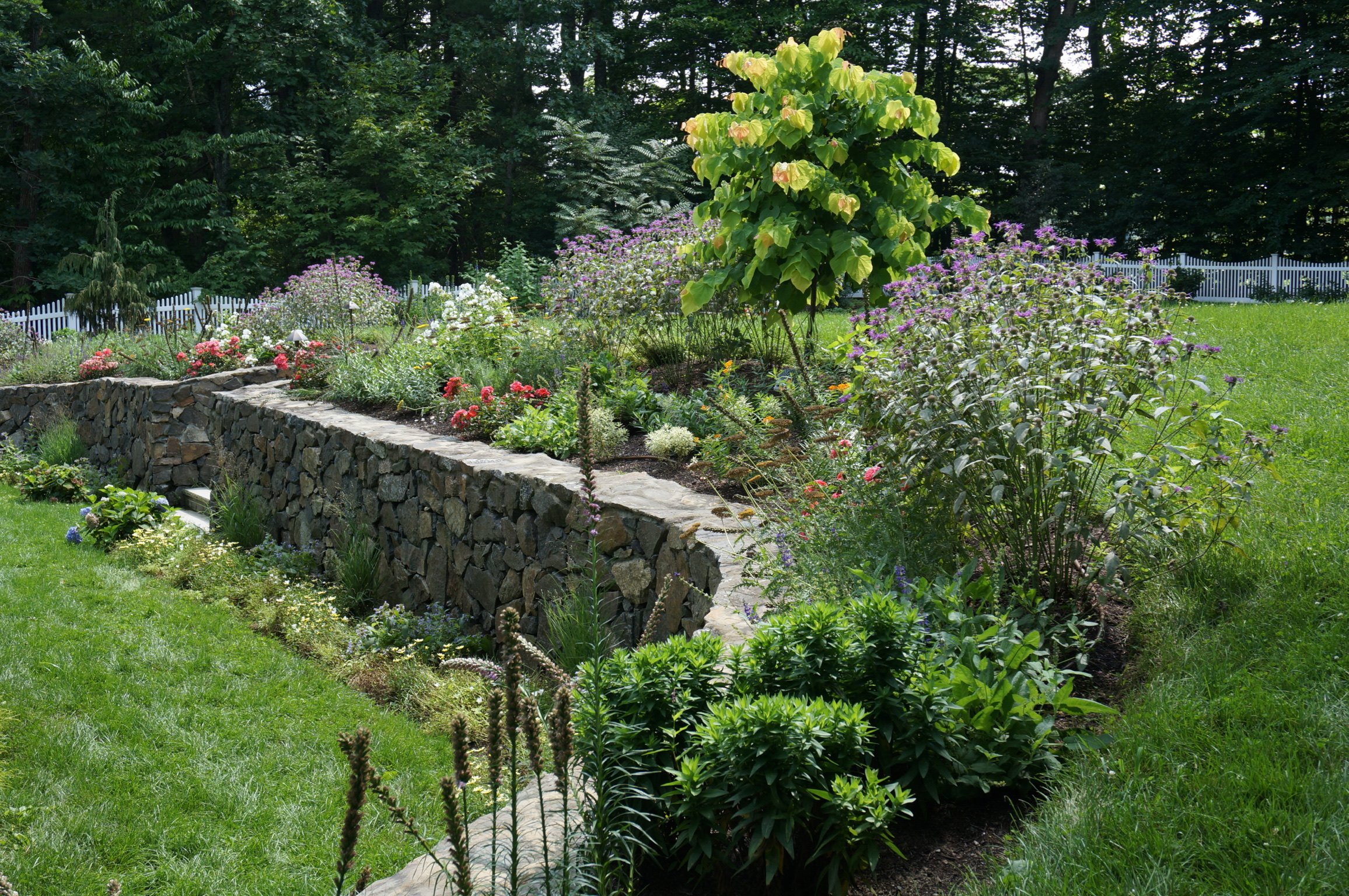
Building Materials to Use in Your Retaining Wall
Just as a retaining wall can serve multiple purposes in your overall landscape design, you also can choose from a range of retaining wall materials to customize your project to your personal style and budget. Some of the options include:
Retaining Wall Blocks
Retaining wall blocks and pavers have the benefit of easily creating curved walls as well as straight. A block retaining wall can be built in a variety of colors and is often the most budget-friendly option.
Stone
Do you love the look of a rock wall with beautiful trailing flowers? Natural stone like flagstone can provide an aesthetically pleasing look to your retaining wall, provided it is chosen to fit well with the exterior materials of your home and other hardscape elements. A stone wall is long-lasting and stands up well to extreme weather, provided sufficient drainage has been built into the design.
Concrete
Like stone, concrete is amenable to the extremes of the New England climate and is stronger than block walls. Retaining walls built with concrete blocks fit well within a modern aesthetic and can be stained or carved to achieve a desired look. However, concrete is generally used only for walls lower than four feet.
Brick
Brick is a highly durable material for use in retaining walls, and provides a classic look. Typically a brick retaining wall will require a more solid reinforced base than walls made from other materials. Drainage is also particularly important when using brick.
As with other hardscape design projects, be sure to consult local building codes and contract with a landscape design professional when planning your retaining wall project.
Wood
Railroad ties made of wood are another option for your retaining wall; however, we don’t recommend it, as it comes with significant drawbacks. Unlike the materials covered above, wood is more greatly impacted by exposure to the elements, and can develop safety issues such as splintering. (After all, the last thing you want to deal with is your retaining wall collapsing!) Wood retaining walls also are more prone to fading, so what looks great when you first install them may not have as nice an aesthetic a few years in.
How to Build a Retaining Wall
As with outdoor stairways and other hardscape projects, building a retaining wall should not be considered a DIY homeowner’s project. There are too many technical considerations that need to be addressed. In particular, retaining walls that are planned for addressing erosion or ground stabilization will require the engineering expertise of a professional landscape design company.
Drainage
To fully realize the functional benefits of a retaining wall, it’s critical that sufficient drainage systems be incorporated into the design. This will help with managing water runoff and will avoid soil saturation. The drainage system should also be designed so that water is directed away from your home’s foundation.
Reinforcement
In order for a retaining wall to stand up to the constant pressure of soil or any material it’s holding back, it must be properly reinforced with backfill. A gravel base, reinforced concrete, or rebar may be used to reinforce the wall. The number of layers of material, the spacing between them, and the wall height are also important considerations in making sure a retaining wall is adequately reinforced.
Professional Oversight
Massachusetts regulations stipulate that any retaining wall design larger than four feet requires an architect to be on site. This will ensure that your retaining wall effectively addresses grading and stabilization, and that the proper materials are used.
To learn more about how you can add a hardscape like a retaining wall to your personal landscape, please download our free ebook, The Expert Guide to Building the Custom Home Hardscape of Your Dreams. And if you're ready to begin exploring your hardscape project with our team of professionals, contact us to schedule a free consultation.


